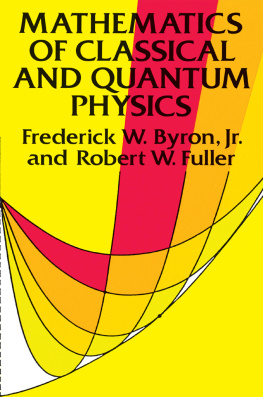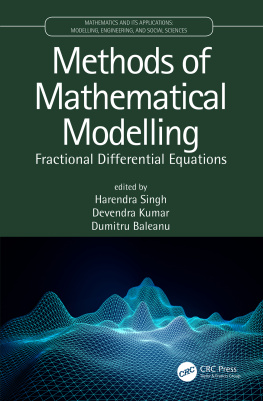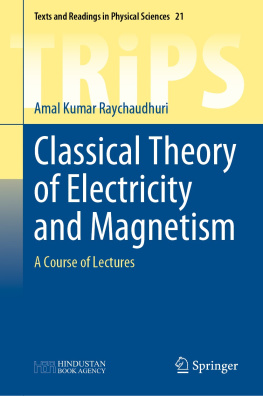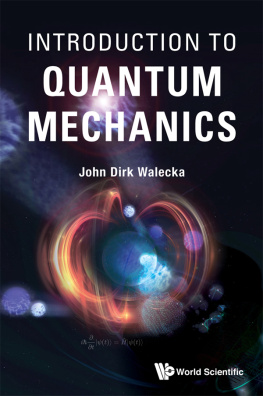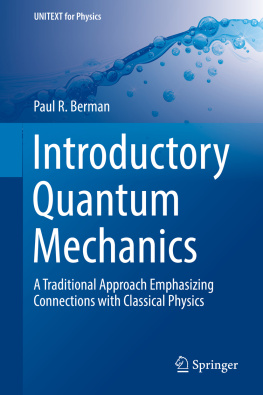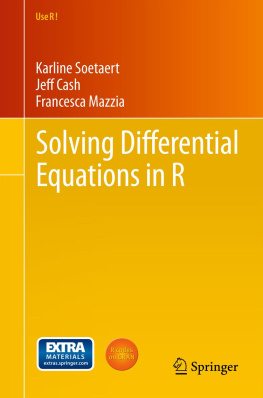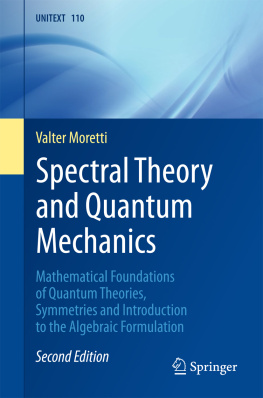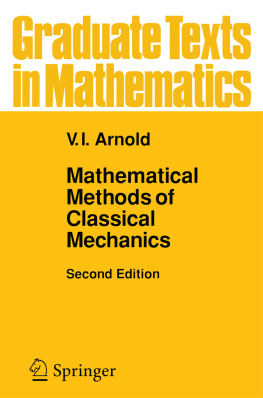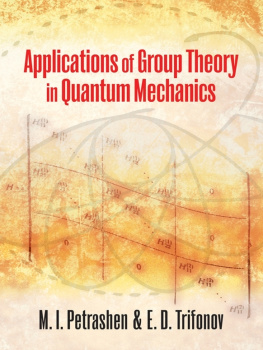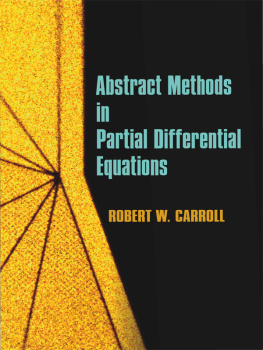MATHEMATICS OF CLASSICAL
AND QUANTUM PHYSICS
FREDERICK W. BYRON, JR.
AND
ROBERT W. FULLER
TWO Volumes Bound as One
Dover Publications, Inc., New York
Copyright 1969, 1970 by Frederick W. Byron, Jr., and Robert W. Fuller. All rights reserved.
This Dover edition, first published in 1992, is an unabridged, corrected republication of the work first published in two volumes by the Addison-Wesley Publishing Company, Reading, Mass., 1969 (Vol. One) and 1970 (Vol. Two). It was originally published in the Addison-Wesley Series in Advanced Physics.
Library of Congress Cataloging-in-Publication Data
Byron, Frederick W.
Mathematics of classical and quantum physics / Frederick W. Byron, Jr., Robert W. Fuller.
p. cm.
Unabridged, corrected republication of the work first published in two volumes by the Addison-Wesley Publishing Company, Reading, Mass., 1969 (Vol. One) and 1970 (Vol. Two) ... in the Addison-Wesley series in advanced physics T.p. verso.
Includes bibliographical references and index.
ISBN-13: 978-0-486-67164-2 (pbk.)
ISBN-10: 0-486-67164-X (pbk.)
1. Mathematical physics. 2. Quantum theory. I. Fuller, Robert W. II. Title.
QC20.B9 1992
CIP
Manufactured in the United States by Courier Corporation
67164X12
www.doverpublications.com
To Edith and Ann
PREFACE
This book is designed as a companion to the graduate level physics texts on classical mechanics, electricity, magnetism, and quantum mechanics. It grows out of a course given at Columbia University and taken by virtually all first year graduate students as a fourth basic course, thereby eliminating the need to cover this mathematical material in a piecemeal fashion within the physics courses. The two volumes into which the book is divided correspond roughly to the two semesters of the full-year course. The consolidation of the mathematics needed for graduate physics into a single course permits a unified treatment applicable to many branches of physics. At the same time the fragments of mathematical knowledge possesed by the student can be pulled together and organized in a way that is especially relevant to physics. The central unifying theme about which this book is organized is the concept of a vector space. To demonstrate the role of mathematics in physics, we have included numerous physical applications in the body of the text, as well as many problems of a physical nature.
Although the book is designed as a textbook to complement the basic physics courses, it aims at something more than just equipping the physicist with the mathematical techniques he needs in courses. The mathematics used in physics has changed greatly in the last forty years. It is certain to change even more rapidly during the working lifetime of physicists being educated today. Thus, the physicist must have an acquaintance with abstract mathematics if he is to keep up with his own field as the mathematical language in which it is expressed changes. It is one of the purposes of this book to introduce the physicist to the language and the style of mathematics as well as the content of those particular subjects which have contemporary relevance in physics.
The book is essentially self-contained, assuming only the standard undergraduate preparation in physics and mathematics; that is, intermediate mechanics, electricity and magnetism, introductory quantum mechanics, advanced calculus and differential equations. The level of mathematical rigor is generally comparable to that typical of mathematical texts, but not uniformly so. The degree of rigor and abstraction varies with the subject. The topics treated are of varied subtlety and mathematical sophistication, and a logical completeness that is illuminating in one topic would be tedious in another.
While it is certainly true that one does not need to be able to follow the proof of Weierstrasss theorem or the CauchyGoursat theorem in order to be able to compute Fourier coefficients or perform residue integrals, we feel that the student who has studied these proofs will stand a better chance of growing mathematically after his formal coursework has ended. No reference work, let alone a text, can cover all the mathematical results that a student will need. What is perhaps possible, is to generate in the student the confidence that he can find what he needs in the mathematical literature, and that he can understand it and use it. It is our aim to treat the limited number of subjects we do treat in enough detail so that after reading this book physics students will not hesitate to make direct use of the mathematical literature in their research.
The backbone of the bookthe theory of vector spacesis in . Our presentation of this material has been greatly influenced by P. R. Halmoss text, Finite-Dimensional Vector Spaces. A generation of theoretical physicists has learned its vector space theory from this book. Halmoss organization of the theory of vector spaces has become so second-nature that it is impossible to acknowledge adequately his influence.
we give an introduction to a subject of ever increasing importance in physicsthe theory of groups.
A special effort has been made to make the problems a useful adjunct to the text. We believe that only through a concerted attack on interesting problems can a student really learn any subject, so we have tried to provide a large selection of problems at the end of each chapter, some illustrating or extending mathematical points, others stressing physical applications of techniques developed in the text. In the later chapters of the book, some rather significant results are left as problems or even as a programmed series of problems, on the theory that as the student develops confidence and sophistication in the early chapters he will be able, with a few hints, to obtain some nontrivial results for himself.
. On the other hand, a one-semester course in advanced mathematical methods in physics could be constructed from Volume II.
Certain sections within a chapter which are difficult and inessential to most of the rest of the book are marked with an asterisk.
In writing a book of this kind ones debts proliferate in all directions. In addition to the book of Halmos, we have been influenced by CourantHilberts treatment of, and T. D. Lees lecture notes on, Hilbert space, Riesz and Nagys treatment of integral equations, and M. Hamermeshs book, Group Theory.
A special debt of gratitude is owed to R. Friedberg whose comments on the material have been extremely helpful. In particular, the presentation of Section 5.10 is based on his lecture notes.
Parts of the manuscript have also been read and taught by Ann L. Fuller, and her comments have improved it greatly. Richard Haglund and Steven Lundeen read and commented on the manuscript. Their painstaking work has removed many blemishes, and we thank them most sincerely.
Much of this book appeared in the form of lecture notes at Columbia University. Thanks are owed to the many students there, and elsewhere, who pointed out errors, or otherwise helped to improve the manuscript. Also, the enthusiasm of the students studying this material at Berkeley provided important encouragement.
While all the above named people have helped us to improve the manuscript, we alone are responsible for the errors and inadequacies that remain. We will be grateful if readers will bring errors to our attention so corrections can be made in subsequent printings.
One of us (FWB) held an Alfred P. Sloan Fellowship during much of the period of the writing; he gratefully thanks Professors M. Demeur and C. J. Joachain for their hospitality at the Universit Libre de Bruxelles. The other author (RWF) would like to thank R. A. Rosenbaum of Wesleyan University, the Universitys Center for Advanced Studies, and its director, Paul Horgan, for their hospitality during the course of much of the work. We would also like to thank F. J. Milford and Battelle Memorial Institutes Seattle Research Center for providing support that facilitated the completion of the work.

